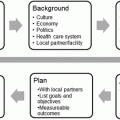Country
GDP
United States
15.2
Nauru
14
Marshall Islands
14
Timor-Leste
13.9
Maldives
13.7
Niue
13.5
Federated States of Micronesia
13.3
Sierra Leone
13.3
Burundi
13
Kiribati
12.5
Cuba
12
Liberia
11.9
France
11.2
Belgium
11.1
Palau
10.8
Switzerland
10.7
Moldova
10.7
Portugal
10.6
Germany
10.5
Table 5.2
2008 WHO rank of bottom 20 countries by ratio of healthcare expenditure to national GDP
Country | GDP |
|---|---|
Equatorial Guinea | 1.9 |
Turkmenistan | 1.9 |
Qatar | 2 |
Kuwait | 2 |
Oman | 2.1 |
Burma | 2.2 |
Brunei | 2.3 |
Indonesia | 2.3 |
United Arab Emirates | 2.5 |
Gabon | 2.6 |
Pakistan | 2.6 |
Mauritania | 2.6 |
Congo, Republic of | 2.7 |
Libya | 3 |
Syria | 3.1 |
Eritrea | 3.1 |
Papua New Guinea | 3.2 |
Singapore | 3.3 |
Angola | 3.3 |
As one might expect, these disparities in healthcare expenditure extend to radiology services. Both as a specialty medical discipline and as a field that heavily relies on complicated, expensive technologies, radiology is often treated as a secondary consideration in health planning for low-resource settings. Since the costs of investing in medical imaging infrastructure and in specialty training are large, diagnostic imaging rates vary substantially around the globe; some nations have little or no access to life-saving advanced imaging technologies, while others have so much that overutilization is a concern.
In addition to recognizing population disparities between nations, it is also important to recognize that many nations have substantial internal disparities in income, education, and health that are related to regional differences or urban/rural economic gradients which may be comparable in magnitude and impact to those in traditional cross-national comparisons. This highlights a persistent myth that poverty only impacts quality of life in homogenously poor nations; in fact, economic inequality also exists among developed countries, including the United States according to a 2011 study by the Congressional Budget Office (CBO) [4]. While the data is often incomplete or contradictory, it is known that over half of the world’s poor live in China and India, nations that are currently classified as middle-income rather than low-income nations and have enjoyed a great deal of prosperity and economic growth overall in recent decades [5]. From the standpoint of increasing access to life-saving medical imaging in the face of economic disparity, it logically follows that independent of overall national statistics regarding population wealth, health care, and other metrics, efforts to improve access to radiological services should focus on human need wherever it exists rather than strictly national boundaries that may not appropriately reflect this need.
Sustainability
One of the key challenges for building radiology services in the developing world is finding “sustainable models,” a term often associated with economic and environmental development [6]. Most successful project development models include considerations for financial and social sustainability in designing a wide variety of enterprises in the public and private sectors. In the context of this chapter, we will define applications of radiology services that provide a good fit for the target nation along several important components of economic program development: planning, project execution, and project evaluation. These include (1) the role of imaging in the larger system of healthcare delivery; (2) financing that is realistic both in the short term as well as on a longer trajectory toward self-sufficiency in the future, rather than perpetuating a state of dependence upon outside donor agencies; (3) a high positive impact on health outcomes; and (4) improvement of local health delivery operations and infrastructure including perhaps a long-term plan for expansion and development of medical services. We will use examples from analytic toolkits for evaluating opportunities, managing projects, and employing innovative technologies and services that can help meet these goals.
Radiology services are currently paid for in a wide variety of ways around the world, ranging from full coverage by the state, private pay for service, donated services by religious organizations and other NGOs, and mixed systems with elements of two or more of the above. All nations must manage both to pay for expensive technologies and to make them fit well within the present healthcare system. The relationship between source of payment and utilization of services by the general public is an important question for national health systems to consider.
In the United States, the historical use of payment on a fee-for-service basis is often blamed for a substantial portion of the high cost of health care and for driving unnecessary care. This has led to the promotion of alternative models for paying for and evaluating healthcare service delivery such as accountable care organizations (ACO).1 These forms of risk sharing may lead to more controlled delivery of care and lower costs in the near future [7]. At the other extreme, in nations where the availability of imaging services is centrally planned and paid for with different incentives, there is often slow adoption of new technology and substantial waiting times for existing services. Whether deliberately planned or de facto in nature, this is a form of rationing.
A related issue for introducing radiology services is the fit with, or “radiology readiness” of, the local health system. For example, installing an MRI facility in a rural hospital for diagnosis of neurological disease must be preceded by consideration of its impact upon the local health system. How will the information be used, and are there resources to treat the illnesses once detected? While the knowledge that a patient has a high-grade brain tumor would always have some value to the patient and their caregiver in any situation, it would have the greatest impact in a setting with the infrastructure to provide appropriate treatment. In a site where the information will not lead to surgery, let alone the postsurgical care, establishing the diagnosis will have far less impact. This will be discussed in greater depth elsewhere in the text.
However, beyond the question of appropriateness looms the bigger issue of economic constraints. In all societies, the cost of buying and maintaining, as an example, an MRI, has to be compared with the cost and impact of alternative technologies and services. Under a condition of economic scarcity, it is much more likely that less expensive goods and services will be chosen over those that are more expensive. Priority is given to providing basic necessities: clean water, vaccinations, well baby visits, etc. before investing in expensive, lower-impact technologies. As a result, a detailed cost-based analysis and consideration of the types of imaging technologies that would have the greatest benefits would be necessary to better inform choices for first steps in improving population access to radiological services.
There are wide variations in how projects are designed and implemented. On one hand, this is a good thing. Diverse situations require individualized approaches. On the other hand, lack of a structured approach can lead to haphazard planning that can in turn lead to poor outcomes. This may have ramifications beyond local failure of a single project by damaging the reputation of the NGO leading donors to reassess their commitments. Therefore, the demand for heightened scrutiny and accountability has led to the development of structured approaches to the design, implementation, and post hoc evaluation of imaging projects. RAD-AID is among the first organizations to develop a robust document for analyzing project appropriateness [8]. More broadly, project planning, analysis, and management require a template or checklist-driven approach to guarantee that all important issues have been considered. Adopting a disciplined approach maximizes the chance of success.
Stay updated, free articles. Join our Telegram channel

Full access? Get Clinical Tree






